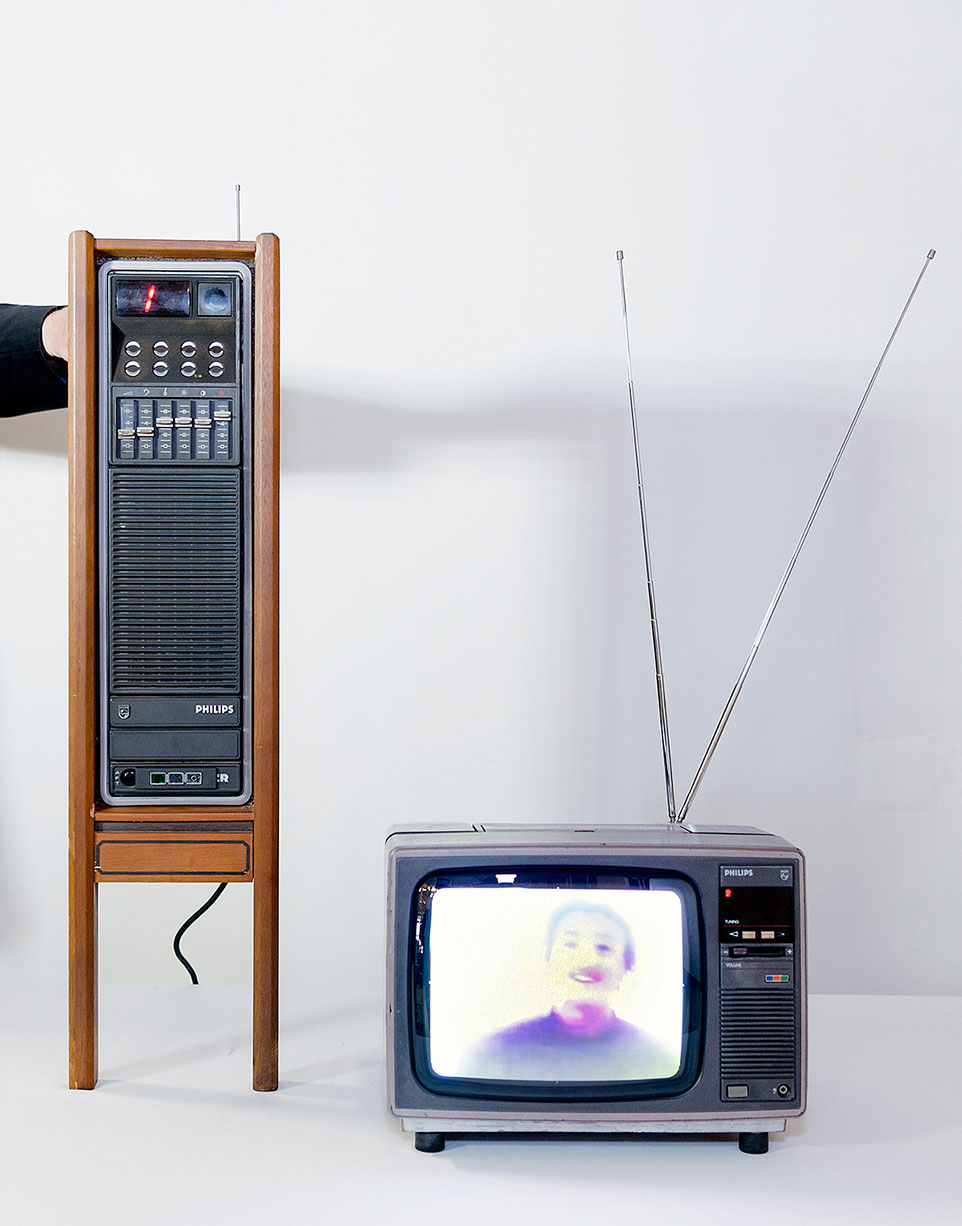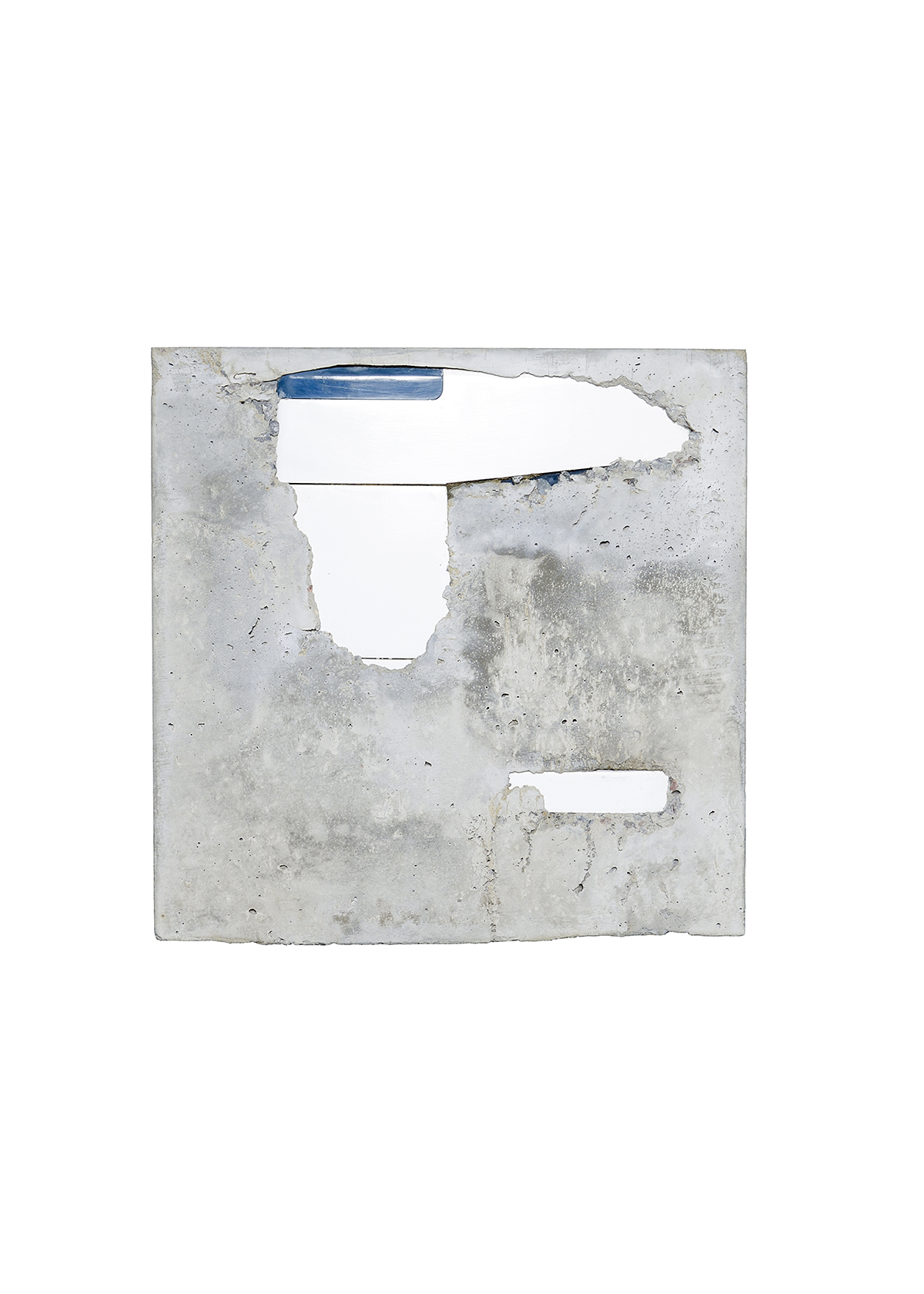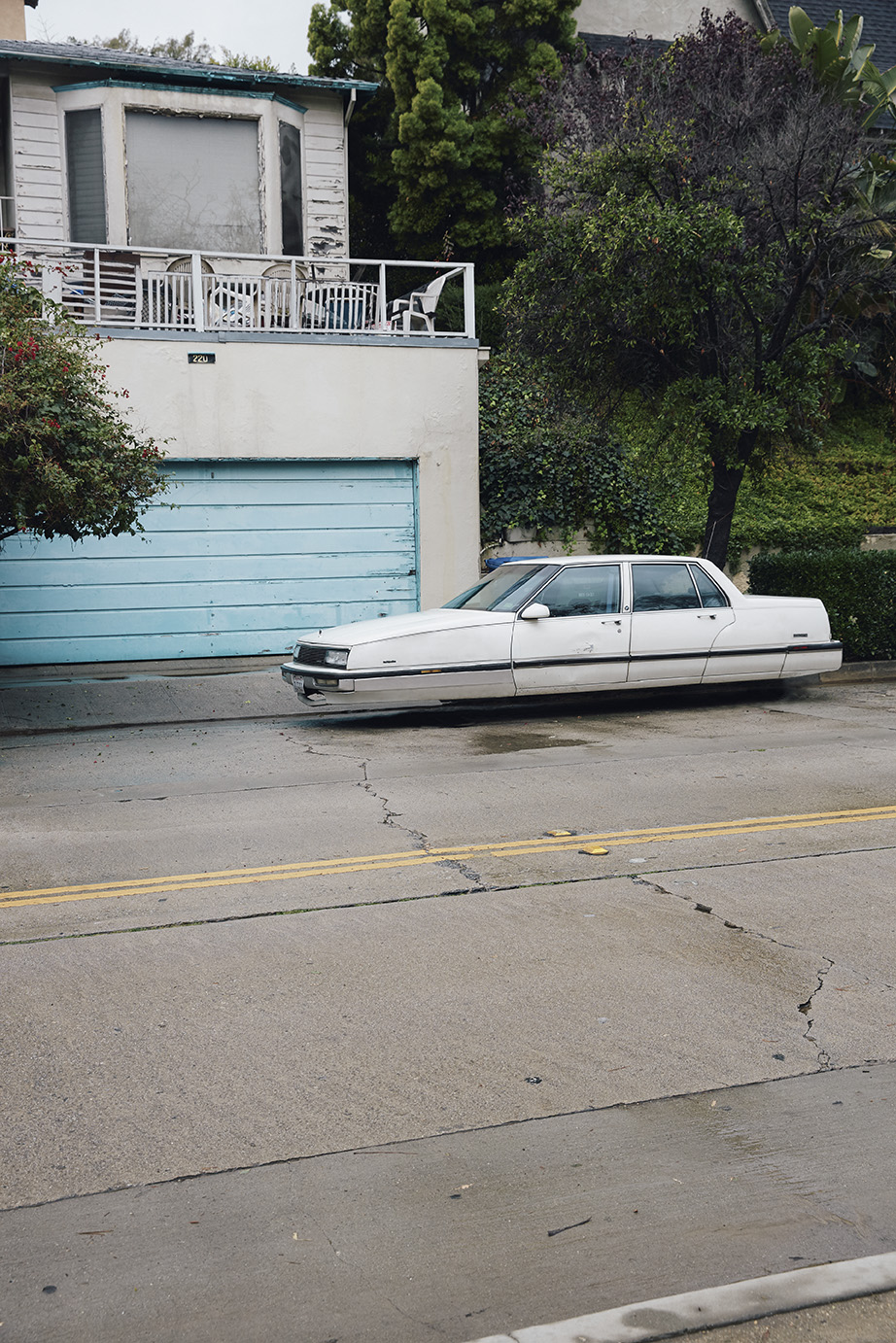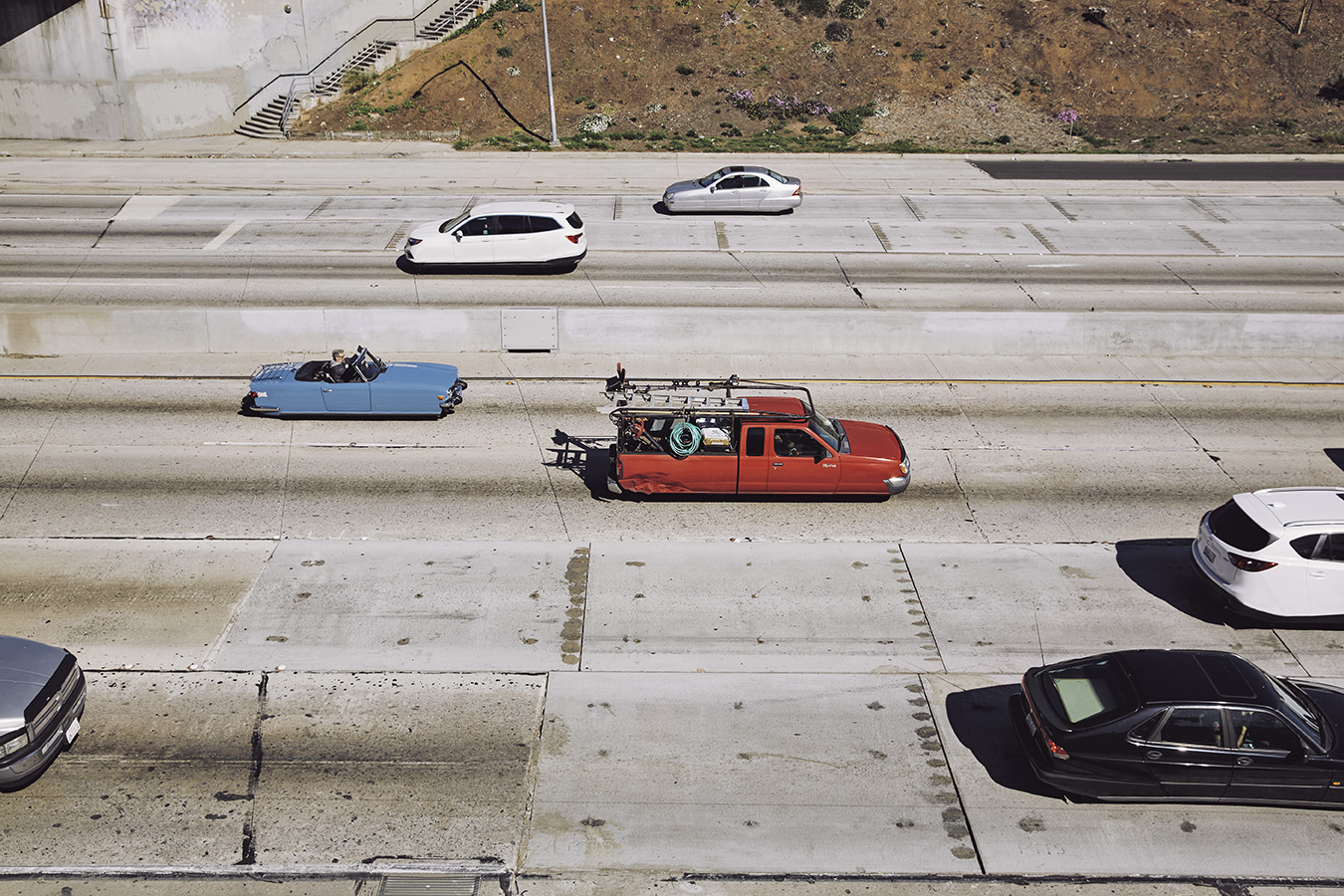
Amy's Fred Ward chair.
Object Therapy is a research and remaking project that we carried out with the University of New South Wales (UNSW), the Australian National University (ANU) and 26 designers and makers from Australia and abroad. It aims to build a new body of knowledge around repair, the design process, and objects and their meaning.
Words by Guy Keulemans, Andy Marks and Niklavs Rubenis.
The rationale for Object Therapy begins with simple observations: professional repair services are in decline, consumerism is rampant, and we are generating more and more waste. Do-It-Yourself repair is growing in popularity, evidenced by the growth of many excellent online communities and information portals, but this doesn’t cater to everyone.
Appropriately, there is a therapeutic quality in many such contributions. It is seen in Kyoko Hashimoto and Guy Keulemans’ adaptive reuse of a cheap and broken, but incredibly precious knitting needle; in Corr Blimey’s sensitive transformation of a mother’s vintage kimono into a cushion for the daughter; in Elbowrkshp’s thoughtful deconstruction of a father’s Gladstone bag into three separate bags for each of his daughters; and in Scott Mitchell’s conversion of a beloved, obsolete television into a transmitter of televisual memories. Rohan’s ‘Six Million Dollar Man’ action figure – similar to one he owned as a kid – has been dressed in 6 detailed and intricate garments and accessories by paper engineer Benja Harney. Although only purchased from an op-shop for one dollar, this repair brings its cost into the thousands. This is not exceptional among our repairers, and we would like to acknowledge and deeply thank them for placing many hours of time and significant amounts of energy and resources into their repairs. This extraordinary investment is all the more remarkable considering the repairers make no claim to ownership for their work: the works will be returned to their original owners at the end of the exhibition. This incredible generosity fits well with the spirit of repair as a process that restores life to objects.
We are consistently burdened by the untimely obsolescence of our possessions, and troubled by both our incapacity to discard them (to where?) and our inability to repair them (by whom?). Object Therapy is an attempt to answer these parenthetical questions and to highlight consumer perceptions of waste, repair and obsolescence. The project is an attempt to address some of the trouble caused by broken objects by connecting their owners with professional artists and designers. The skilled contributors we have assembled, the ‘repairers’, don’t necessarily have great familiarity with repair either. Some do. But they are all in command of considerable visual, material and technical expertise. Object Therapy intends to uncover, collate and assess the many and varied possibilities for creativity within the practice of repair. It was imagined that the generative aspects of damage, in which the conditions of wear, use and breakage can be unique, would lead to a broad range of creative responses and perhaps innovative repair typologies or techniques. As such, the brief was open. Repairers were provided with a video of an interview with their object’s owner and asked to respond in any manner they chose. We can identify these responses as having three main categories: transformative repair – a restoration of function with a change in form or appearance, adaptive reuse – a reconfiguration of material into a new purpose or function, and critical objects – that challenge the assumptions and conventions underlying the design, use or understanding of products. These categories are not a precise fit for all contribution and some outcomes merge or transcend them.
Transformation: the repairers and their repairs
Before we overview the work presented in this exhibition, firstly we should acknowledge that repair and reuse have historical roots within cultures across the world. The traditional Japanese craft of kintsugi – the repair of ceramics with urushi glue and gold dust – is an important precedent for Object Therapy. Its overarching concept, the aesthetic transformation of an object through a process of repair, neatly predicts the likely outcomes of merging visual arts and repair practice. We are lucky to include the work of master lacquer ware craftsman Yutaka Ohtaki in the exhibition whose repair of Lindy’s Western-style plate is unusual for traditional kintsugi. But as with the kintsugi repair of Korean and Chinese ceramics in the past, during the Edo period (1603–1868), it re- 5 territorialises the plate. Originally made in Europe, it now feels Japanese. Other contributors have worked in this theme.
Naomi Taplin uses modern adhesives to sensitively repair a much-loved, ‘everyday’ bowl decorated with a fish. The golden seams diagram the force that broke it, subduing and ameliorating it. Conversely, Kyoko Hashimoto’s repair of Skye’s glass ring with a sterling silver sleeve recalls the time before the advent of modern adhesives, in which ceramics, in Chinese and Western traditions were repaired with metal staples. Traditional techniques deployed in the service of unconventional mending is evident in Elise Cakebread’s kilt repair, Liam Mugavin’s rocking horse, and Guy Keulemans’ use of photoluminescent pigments to craft a prosthetic leg for a broken glass giraffe.
Embarking on a different journey, Halie Rubenis’ playful decoration of chipped crockery with plastic spheres, fashioned from the expanded polystyrene box in which they were delivered to her, might not be fully functional, but the results are clearly transformational and revitalise everyday objects that are routinely discarded. Halie’s approach embodies that often referenced Australian ‘make do’ attitude of repairing with materials at hand. We see this in Andrea Bandoni’s repair of a clothesbasket with bright blue hose interweaved through the wicker. As a Brazilian, she cites ‘gambiarra’ culture, her country’s own version of the ‘make do’ concept.
Henry Wilson’s transformed bee smoker, a traditional tool used to calm bees prior to extracting honey from their hive, also leverages the ‘make do’ concept, but in the form of a critical object. After disassembling the leather joinery of the bellows, Henry was struck by the difficulty of finding replacement materials in inner city Sydney, an area similar to those in many Australian cities that have seen a decline in local manufacturing. Henry’s choice to replace the bellows with a computer fan – sourced from a computer supply store in the CBD – is a provocative hack that responds to the hurdles placed in the way of Australian makers and repairers, particularly when attempting to source local materials. It is the nature of critical commentary to find and dig out problematic roots. We might have expected Rohan Nicol to restore Kristie’s Kenwood mixer to function, given it’s sentimental history and potential for continued use. But, as Rohan notes, the mixer had lost its function sometime ago, yet hung around in disrepair. Rohan sees it as an abstract marker for the family’s inability to let go of their possessions. His transformation, a burial in cement, creates an ‘archaeological witness’ to the potential for grief in consumerism. In his repair of Chris’s inherited broken statuette clock, Rohan takes a similar path by binding the broken parts in cloth suggestive of ancient artefacts. He comments that the memory surrounding the object outweighs the object itself, enabling a moment in time to let the physical object go. The sentimental values within Rachel’s father’s bagpipes, harken to a Scottish homeland, and are unexpectedly reconfigured by Dylan Martorell. His hybrid instrument uncovers the traces and links between divergent global music cultures.
We thought we might test the boundaries of authorship in transformative repair by giving a broken vase, made by notable glass artists Ben Edols and Kathy Elliot, to another notable glass artist, Richard Whiteley. As former studio mates, though, this potential authorship issue was simply resolved by a phone call. More significantly, Richard’s repair, a clean slice that cuts away and discards broken edges and exposes a sublime interior void, has an unexpected therapeutic dimension. The vase was originally a wedding gift from a dear friend, since died. The cutting away of fracture is a material intervention into the complex emotional relations embedded by such provenance. It is an approach shared by Dale Hardiman’s knife repair. The knife’s broken edge, associated by the owner with divorce and death, was removed and its blade shortened. Its handle was replaced with a new one made from local clay, and the fragility of this material acts as a reminder to take care of our possessions, and perhaps human relationships as well.
Object Therapy has been full of surprises none more so than Peter who submitted himself as an object for transformative repair. Unable to envision what this might mean for research or exhibition, but unable to decline its possibilities, we passed his submission to Amsterdam-based conceptual designers Thought Collider. Their response firstly makes clear it is inappropriate to apply repair to a person as one would to an object, but nonetheless proposes a transformative experience through the form of collaborative research. ‘Peter the Person’, as he came to be known, has embraced their proposal to research colonisation of the moon in the public space of the exhibition. We hope his extra-planetary research might return attention to the grave problems of the earth and it’s human habitation.
Social and environmental problems were predicted to emerge from the Object Therapy process. Susannah Bourke’s critical object captures one of broad significance: the responsibility of companies towards the products they make. For her Mistral fan, this was an historical, life-taking lapse in electrical safety standards, but deeper and more nuanced problems of product design persist in affecting our contemporary world. We hoped to include more industry in our process, but Kenwood (now owned by Delonghi) and Nintendo didn’t respond to our invitations. Numark, a maker of DJ equipment, seemed initially interested, but soon went dark. We can only speculate as to the disinterest of industry, but note that there is an emerging and global community push for better corporate stewardship of consumer products. Such policy would require companies to take responsibility for retrieving, repairing or recycling their products from the post consumer landscape, but it is generally not the companies themselves behind these proposals. In absence of Numark’s participation, a DJ mixer got pulled from the Object Therapy process, but we can at least acknowledge the second hand electronics market (thanks Ebay) for helping us fix that owner’s other object, a retro Nintendo Gamecube. This fix, however, may be short lived, as those coloured RCA cable inputs connecting Gamecube to screen are disappearing from new televisions.
Problems of durability and obsolescence, the lack of lifecycle design and materials that harm the environment, are explored in many Object Therapy works. Trent Jansen’s transformation of an old washing basket trolley into clothes pegs is neatly conceptual, yet also interrogates changing material culture. Traditionally pegs were made from wood, but are now often made from petrochemical polymer plastics. The ‘new’ steel pegs made from the trolley’s frame look and feel like artefacts of a lost material culture. A light coating of rust is forming on their surface. Even if plain steel might be unsuitable for clothes pegs, they raise the question: in the rush to make everything faster, lighter and cheaper, do we lose or gain by switching to plastics from endlessly recyclable, but energy intensive, materials like steel?
Such questions are at the forefront for UNSW’s Centre for Sustainable Materials Research and Technology. They have developed patents for feeding worn car tyres into steel production and they specialise in extracting energy from polymer composites. In their contribution to Object Therapy, they brutally pulverised an unwanted stone giraffe for the purpose of material analysis, and followed this by turning its debris into a reconstructed polymer building product. This clarifies that varied techniques, both passionate and dispassionate, are required to tackle our tremendous contemporary problems of waste and consumerism.
The transformational capacity of material is also a concern for Niklavs Rubenis in his reconfiguration of 1950s furniture designed by Australia’s iconic Fred Ward. A deconstructed cabinet glides through a chair frame, forming a bench seat. Such adaptive reuse is not just transformative expression, but also transient expression, in that it opens up to the potential for further future transformation. This is also seen in Monique van Nieuwland’s reconfigured spinning jenny, now a wall-mounted clothes and hat rack; and Alison Jackson’s renewal of a child’s ruler, broken in play, into a set of playable dominoes. Subhadra’s submission, an expensive educational puzzle missing several parts, was a conundrum. It was impossible for her students to complete the task, but difficult to discard due to its cost. Daniel Emma’s transformation creates an entirely new game via a recontextualising face-lift.
Not all attempted repairs were successful. Richard’s theodolite, an instrument used for surveying, was prohibitively costly to repair. But it’s past use in mapping indigenous archaeological sites suggested an alternative approach. It has been given a political voice by Franchesca Cubillo in a text that calls for Indigenous sovereignty and respect for the wisdom of ancient cultures.
The sums: where to from here?
Object Therapy indicates the value and potential of repair as a practice by creative professionals. It highlights the positive concern that people have for finding solutions to product obsolescence and waste. We hope it may re-orientate attitudes towards production, consumption and disposal. This project draws attention to work yet to be done: Object Therapy is neither a comprehensive mapping of the possibilities of transformative repair nor a finished project. It is simply a starting point. Object Therapy points to the social and political agency required to transform the conventions of production and consumption, but, more importantly, we hope it points to a revitalisation of creative practice, skills and modes of thinking that will enable us to deal with the problems of the material here and now.
View the full catalogue here.
Objects were repaired by Andrea Bandoni, Corr Blimey (Louisa de Smet and Steven Wright), Susannah Bourke, Elise Cakebread, Franchesca Cubillo, Elbowrkshp (Elliat Rich and James B. Young), Daniel Emma, Dale Hardiman, Benja Harney, Kyoko Hashimoto, Alison Jackson, Trent Jansen, Guy Keulemans, Dylan Martorell, Scott Mitchell, Liam Mugavin, Rohan Nicol, Monique van Nieuwland, Yutaka Ohtaki, Halie Rubenis, Niklavs Rubenis, SMaRT@UNSW, Naomi Taplin, Thought Collider (Mike Thompson and Susana Cámara Leret), Henry Wilson, and Richard Whiteley.




